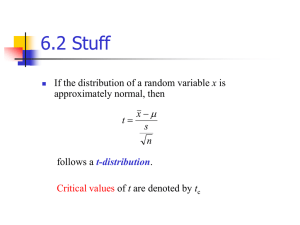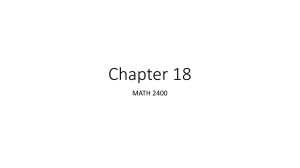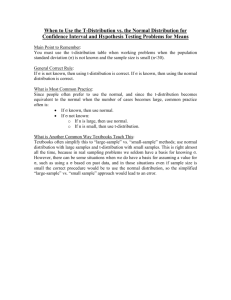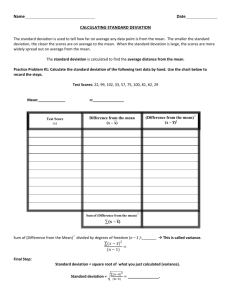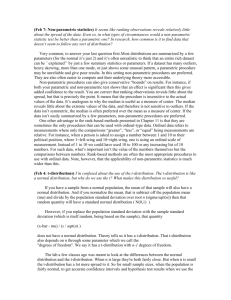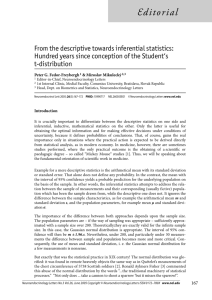Instructors notes for t-distribution simulation.
advertisement
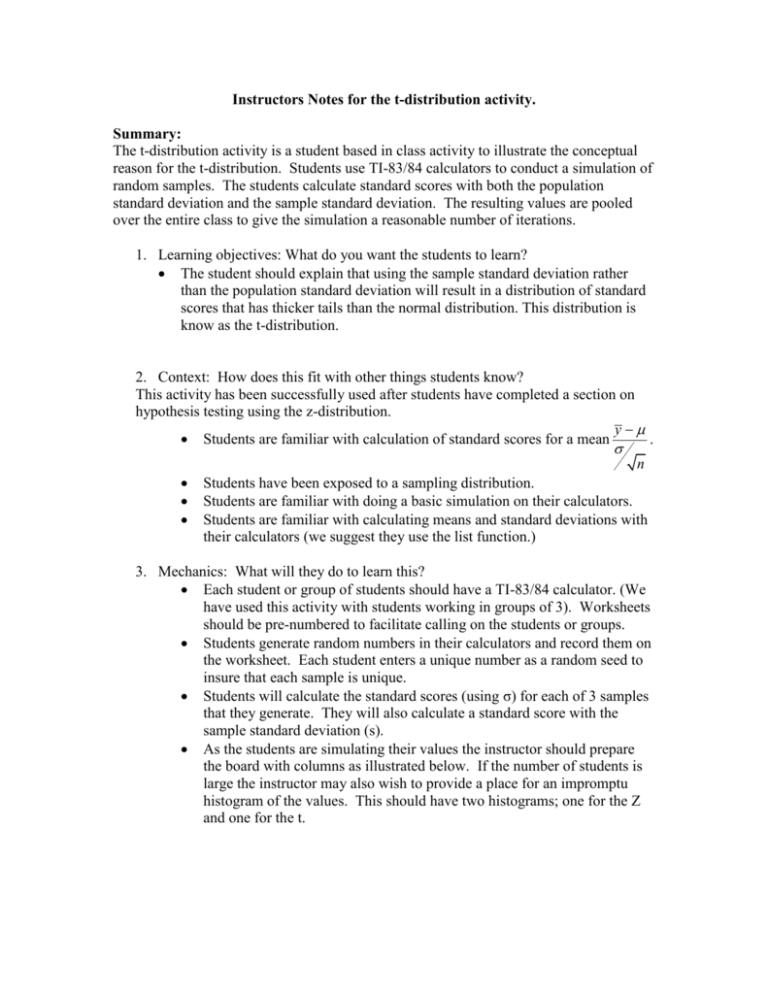
Instructors Notes for the t-distribution activity. Summary: The t-distribution activity is a student based in class activity to illustrate the conceptual reason for the t-distribution. Students use TI-83/84 calculators to conduct a simulation of random samples. The students calculate standard scores with both the population standard deviation and the sample standard deviation. The resulting values are pooled over the entire class to give the simulation a reasonable number of iterations. 1. Learning objectives: What do you want the students to learn? The student should explain that using the sample standard deviation rather than the population standard deviation will result in a distribution of standard scores that has thicker tails than the normal distribution. This distribution is know as the t-distribution. 2. Context: How does this fit with other things students know? This activity has been successfully used after students have completed a section on hypothesis testing using the z-distribution. y Students are familiar with calculation of standard scores for a mean . n Students have been exposed to a sampling distribution. Students are familiar with doing a basic simulation on their calculators. Students are familiar with calculating means and standard deviations with their calculators (we suggest they use the list function.) 3. Mechanics: What will they do to learn this? Each student or group of students should have a TI-83/84 calculator. (We have used this activity with students working in groups of 3). Worksheets should be pre-numbered to facilitate calling on the students or groups. Students generate random numbers in their calculators and record them on the worksheet. Each student enters a unique number as a random seed to insure that each sample is unique. Students will calculate the standard scores (using σ) for each of 3 samples that they generate. They will also calculate a standard score with the sample standard deviation (s). As the students are simulating their values the instructor should prepare the board with columns as illustrated below. If the number of students is large the instructor may also wish to provide a place for an impromptu histogram of the values. This should have two histograms; one for the Z and one for the t. Student number 1 2 3 4 Sample number 1 2 3 1 2 3 1 2 3 1 2 3 Standard Score 1 Standard Score 2 . . . After all of the values are listed on the board the instructor will lead a discussion that of the results. o The instructor should point out examples where there is a large difference in the value using the “Z” formula vs. using the “t” formula. We typically point out some examples then call on the student who posted that example to also report their sample standard deviation for that sample. o The instructor should point out that the proportion of standard scores is greater when using the “t” statistic than when using the Zstatistic. 4. Variety: How many levels of thinking will be included? Students will need to think abstractly about the shape of the distributions of the statistics. Students will do some very basic calculations. 5. Summary: How will the learning be made concrete? A summary slide will be used at the end of the activity where students are asked as a group to fill in the following If we use a sample standard deviation in calculating the standard score the resulting distribution will have______ values in the tails of the distribution than if we use the population standard deviation. 6. Follow-up: How will you come back to this and make the learning important? The next lecture will bring this back when we talk about calculations with the t-distribution. Students will be asked a question on the online quiz about this topic. 7. Evidence from use. The values below are the actual results from the use by a class.
